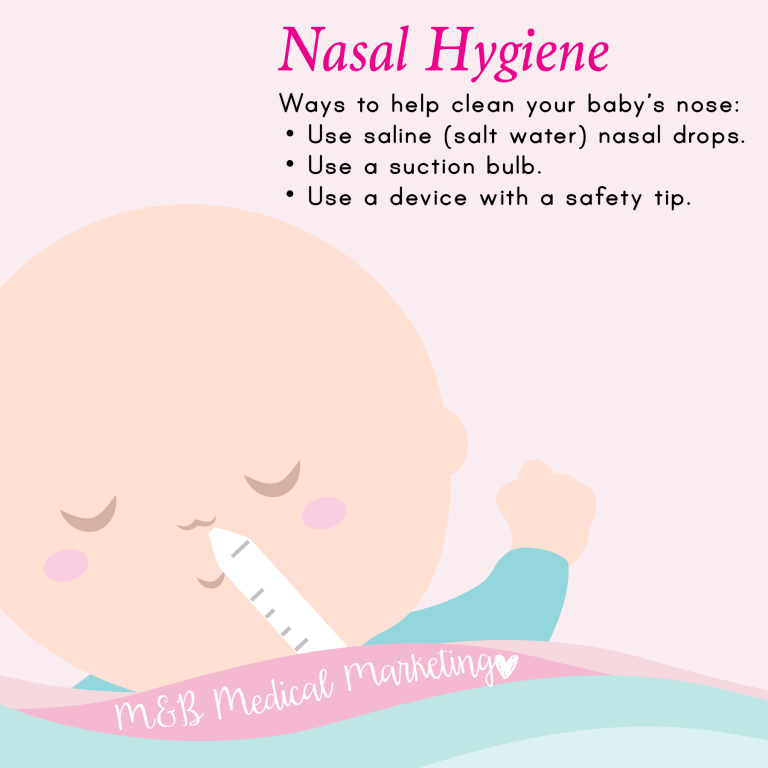ADORABLE INFANTS
NASAL
Hygiene

Newborn babies may sound like they have a blocked nose the first few days after birth. Do not be alarmed when this happens. This is because there is leftover amniotic fluid in their nose.
Although babies do not know how to blow their nose, they have the natural instinct to sneeze. Sneezing will help them get rid of fluids in their breathing passages. The fluid will usually clear up after a week, and they can then breathe without any problems.
Don’t leave everything to baby
Instincts alone may not be sufficient to help a baby breathe freely, however.
Sometimes, babies may experience difficulties breathing through their nose and end up breathing through their mouth instead. Now, this can be a problem, especially during feeding time as they can choke on milk.
Also, babies can catch a cold or the
flu easily as their immune system is still developing. When they do, they can end up with a blocked nose.
Pollutants in the air (such as dust, cigarette smoke and perfumes) can also cause blocked nose in babies.
In situations such as those listed above, there are ways for you to help clean your baby’s nose.
Good nasal hygiene
Use saline (salt water) nasal drops. Put your baby on her back and put 2-3 drops of saline nose drops into each nostril. Wait for 30 to 60 seconds and turn her on her stomach to drain her nose. Hold a tissue to her nose to help drain it. Look out for her to sneeze or cough.
Use a suction bulb for babies to clean your baby’s nose. Press the bulb to remove air. Put the tip just inside your baby’s nostril and not too deep. Slowly release the bulb to suck the fluid out of the nose. Repeat for the other nostril. When done, wash and dry the bulb.
Use a device with a safety tip to gently spray saline drops into your baby’s nostrils. The safety tip gently sprays saline and makes sure your baby’s nose is free of injury.
When to see a doctor
- Your baby still finds it difficult to breathe after suctioning.
- Your baby has fever, rash and cries for no clear reason.
- Blocked nose is accompanied by swelling of your baby’s forehead, eyes and side of the nose or cheek.
- Your baby has blocked nose for more than two weeks.
- Your baby finds it difficult to feed or has no appetite.
Source: MIMS HealthToday Malaysia
